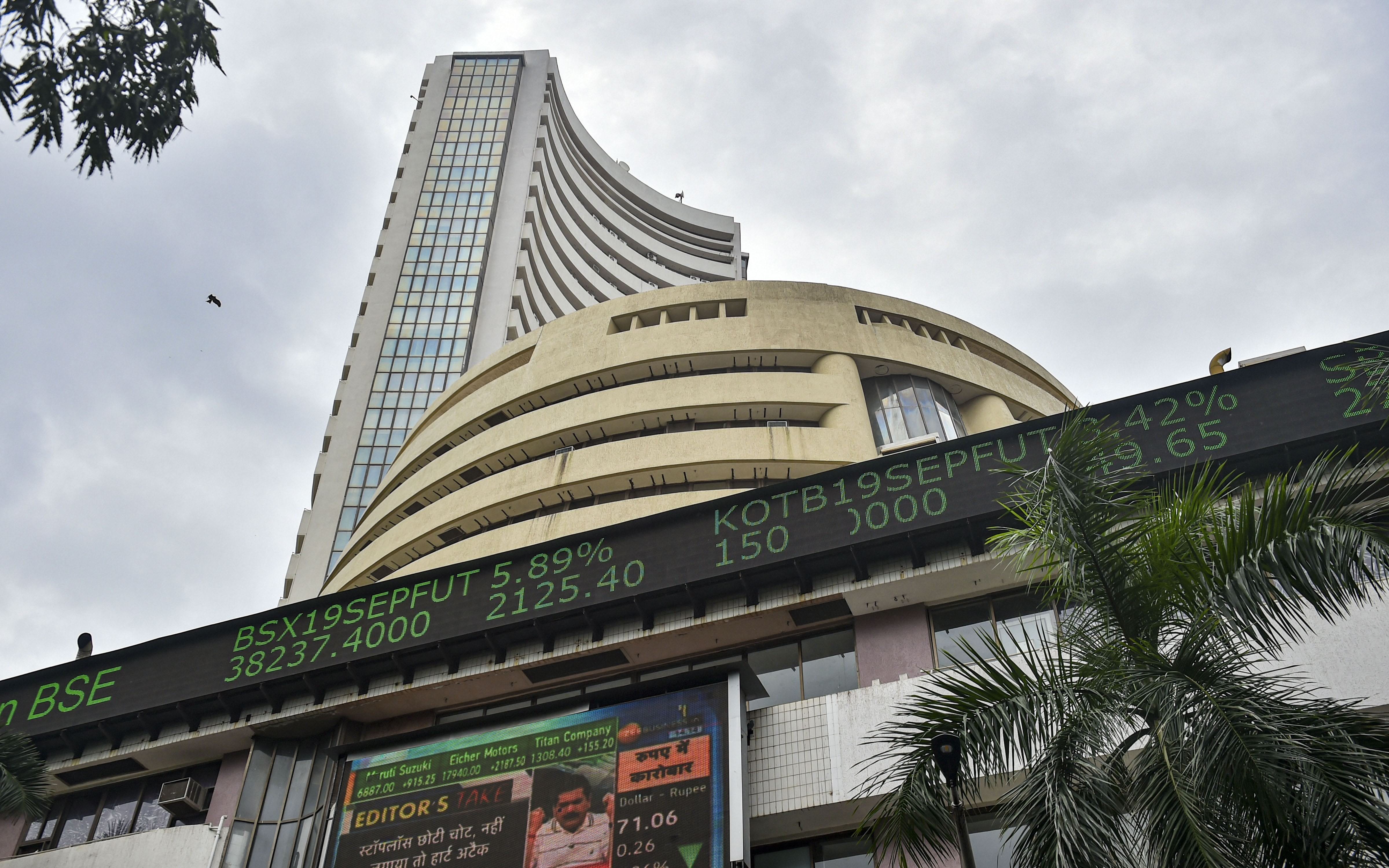
8 firms lost ₹1.57 lakh crore in market valuation last week
Eight of the top 10 companies by market capitalisation witnessed a combined erosion of Rs 1,57,277.53 crore in valuation last week, with Reliance Industries emerging as the biggest laggard.

Eight of the top 10 companies by market capitalisation witnessed a combined erosion of ₹1,57,277.53 crore in valuation last week, with Reliance Industries emerging as the biggest laggard.
The Sensex lost 1,457.16 points, or 3.83 per cent, last week when two firms — Infosys and HCL Technologies — ended as gainers among the most valued firms.
Reliance Industries’ market valuation fell by ₹70,189.95 crore to ₹14,88,797.82 crore, while Bharti Airtel’s was down by ₹31,096.67 crore to ₹2,39,880.86 crore. ICICI Bank saw an erosion of ₹14,752.95 crore to ₹2,40,329.93 crore. HDFC’s market valuation was down by ₹12,737.66 crore to ₹2,96,339.09 crore and that of Tata Consultancy Services (TCS) declined ₹10,675.53 crore to ₹9,08,940.15 crore, reported PTI.
Related News: COVID effect: Mutual funds pull out ₹17,600 cr from stocks in Jul-Aug
HDFC Bank witnessed an erosion of ₹7,286.42 crore to ₹5,74,614.23 crore and Kotak Mahindra Bank lost ₹5,710.01 crore to ₹2,47,292.12 crore.
Hindustan Unilever Limited’s valuation also dropped by ₹4,828.34 crore to ₹4,88,179.05 crore. In contrast, HCL Technologies, the latest entrant in the list of most valuable companies, added ₹4,450.79 crore to ₹2,24,555.79 crore in its market capitalisation. The valuation of Infosys rose by ₹3,622.14 crore to ₹4,30,647.81 crore.
RIL continued to be the most valuable firm in India followed by TCS, HDFC Bank, HUL, Infosys, HDFC, Kotak Mahindra Bank, ICICI Bank, Airtel and HCL Technologies.
So what is market capitalisation?
In simple terms, market capitalisation (m-cap) refers to the value that the stock market assigns to a company. It is purely determined by what market participants thing the company is worth.
Related News: Dollar no safe haven, its global dominance will be history: Jim Rogers
A more precise definition of m-cap is the total value of all outstanding shares of a company. In other words, it is derived by multiplying the price of each share as decided by the stock market with the total number of outstanding shares. So, for example, the outstanding shares of Reliance Industries is 6,76,18,44,754. Now, to calculate the company’s m-cap, you multiply the shares outstanding with its current market price. When the markets closed on Friday, each share of Reliance Industries was worth ₹2,201.70. That gives the total m-cap of the firm as ₹14,88,797.82 crore (6,76,18,44,754 * 2,201.70).
Why is m-cap important?
For one, it gives an indication of how big a company is relative to others. So a company with a market capitalisation of say ₹10,000 crore is much bigger than say a company with ₹100 crore.
Secondly, since it is the value determined by market participants, the m-cap of a company is considered as the collective wisdom of all those who trade in its shares and, as such, forms a reliable gauge of its performance and prospects.
What affects m-cap?
Assuming that there is no change in the equity structure of a company, its m-cap is determined by market participants’ perception of what it is worth. That perception gets reflected in the company’s share price. So when a majority feels a company’s prospects are good, the share price goes up and vice-versa. In that sense, the m-cap is affected by the change in sentiment of investors.
Related News: RIL’s retail arm receives ₹7,500 cr from Silver Lake for 1.75% stake sale
Any positive news will drive up the market capitalisation. The m-cap of Reliance Industries, for example, has more than doubled since March on the back of a series of news about big investments into the company. On the contrary, the m-cap of Yes Bank has fallen by over 97% since August 2018 due to bad news flows that affected investor sentiment.
How can it help individual investors?
Companies are classified as large-caps, mid-caps and small-caps based on m-caps. Large cap companies are generally less risky than mid or small-cap companies. So an equity investor, whose main concern is the risk involved in investing, can minimise it by sticking to only large-cap companies. On the flip side, if you are the kind who can tolerate risk, then you can consider mid-cap and small-cap companies, which can provide higher returns than large-cap companies but come with higher risk as well. Also, only a very few percentage of mid-cap and small-cap companies continue to keep growing.

